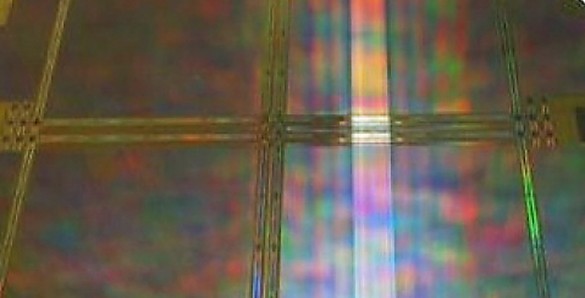Radiation damage bigger problem in microelectronics than previously thought
July 23, 2012
The amount of damage that radiation causes in electronic materials may be at least 10 times greater than previously thought, according to research conducted at Vanderbilt University.
Using a combination of lasers and acoustic waves, the researchers were able to peer through solid materials to pinpoint the size and location of defects buried deep inside with unprecedented precision
“The ability to accurately measure the defects in electronic materials becomes increasingly important as the size of microelectronic devices continues to shrink,” Professor of Physics Norman Tolk explained.
“When an individual transistor contains millions of atoms, it can absorb quite a bit of damage before it fails. But when a transistor contains a few thousand atoms, a single defect can cause it to stop working.”
Previous methods used to study damage in electronic materials have been limited to looking at defects and deformations in the atomic lattice. The new method is the first that is capable of detecting disruption in the positions of the electrons that are attached to the atoms. This is particularly important because it is the behavior of the electrons that determine a material’s electrical and optical properties.
Coherent acoustic phonon spectroscopy (CAPS)
To detect the electron dislocations, the physicists upgraded a 15-year-old method called coherent acoustic phonon spectroscopy (CAPS). “CAPS is similar to the seismic techniques that energy companies use to search for underground oil deposits, only on a much smaller scale,” said post-doctoral fellow Andrew Steigerwald.
Oil explorers set off a series of small explosions on the surface and measure the sound waves that are reflected back to the surface. That allows them to identify and map the layers of different types of rock thousands of feet underground.
Similarly, CAPS generates a pressure wave that passes through a chunk of semiconductor by blasting its surface with an ultrafast pulse of laser light. As this happens, the researchers bounce a second laser off the pressure wave and measure the strength of the reflection.
As the pressure wave encounters defects and deformities in the material, its reflectivity changes and this alters the strength of the reflected laser light. By measuring these variations, the physicists can detect individual defects and measure the effect that they have on the material’s electrical and optical properties.
The physicists tested their technique on a layer of gallium arsenide semiconductor that they had irradiated with high-energy neon atoms. They found that the structural damage caused by an embedded neon atom spread over a volume containing 1,000 atoms — considerably more extensive than that shown by other techniques.
Nanoelectronics most vulnerable
“This is significant because today people are creating nanodevices that contain thousands of atoms,” said Steigerwald. One of these devices is a solar collector made from quantum dots, tiny semiconductor beads that each contains a few thousand atoms. “Our results may explain recent studies that have found that these quantum-dot solar collectors are less efficient than predicted.”
“The fact is that we really don’t understand how any atomic-scale defect affects the performance on an optoelectronic device,” said Tolk. “Techniques like the one that we have developed will give us the detailed information we need to figure this out and so help people make nanodevices that work properly.”
The research was supported by Department of Energy grant FG02-99ER45781, Army Research Office grant W911NF-07-R-0003-02 and National Science Foundation grant ECCS0925422. In addition, portions of the work were performed at the Vanderbilt Institute of Nanoscale Science and Engineering, using facilities renovated until the NSF grant ARI-RW DMR-096331.
